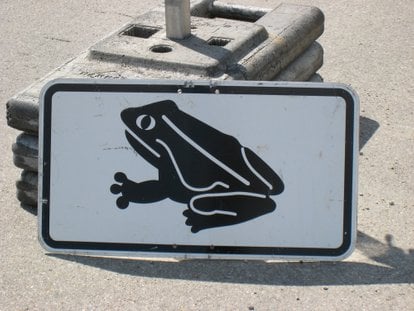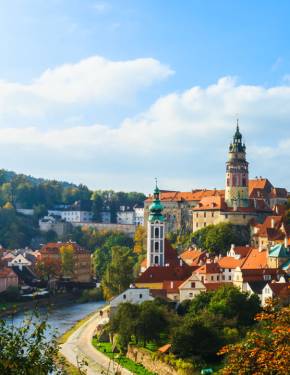Toad Migration in Germany 2026
Have you ever noticed a traffic sign with a frog on it?
Best time: March–April
Every spring, the countryside of Germany comes alive with the movement of toads as they embark on a perilous migration to their breeding grounds. This annual event draws the attention of conservationists and nature enthusiasts alike. The phenomenon highlights both the resilience of these amphibians and the challenges they face in navigating a landscape increasingly fragmented by human development.
The Migration Process
Toads in Germany awaken from hibernation as temperatures rise and embark on a journey to nearby lakes and ponds to lay their eggs. The migration typically occurs at night when the weather is mild and humid, with temperatures around 7°C (45°F) being ideal. Rainy conditions are especially favorable, as they provide the moist environment toads prefer. During this migration, female toads may travel up to 3.1 miles (5 km), often carrying several male suitors on their backs.
Timing and Conditions
The timing of the toad migration varies depending on weather conditions but generally occurs between late February and April. A prolonged winter or unseasonably cold temperatures can delay the start of the migration, while early spring warmth can trigger an earlier movement. Those interested in observing the migration can check local forecasts and updates from conservation groups for the best times to witness this event.
Where to See the Migration
Toad migrations can be observed across various regions in Germany, particularly in areas near natural ponds and lakes. Areas such as the Kaiserweiher near Kaufbeuren in Bavaria are renowned for their large amphibian populations. Some popular locations include the Eifel National Park, Black Forest (a large forested mountain range), and Bavaria’s lakes (Lake Starnberg, Lake Ammersee, Lake Tegernsee, Lake Walchensee, Königssee). Many of these areas are equipped with temporary barriers and fences along roads to protect the toads from traffic. Conservationists and volunteers often assist by placing buckets at intervals along these barriers to safely transport the toads across roads. For those interested in observing the migration, it is recommended to visit these sites during the peak migration period in mid March.
Species
In Germany, the most commonly observed toad species during the migration are the common toad and the natterjack toad. The common toad is characterized by its robust body and warty skin, typically measuring 8 to 13 centimeters in length, and thrives in a variety of habitats, including woodlands and gardens. In contrast, the natterjack toad is smaller, with a distinctive yellow stripe down its back, and prefers sandy habitats like dunes and heathlands. During migration, these toads travel to breeding sites, often requiring conservation efforts such as road barriers to ensure their safety. Both species play crucial roles in controlling pest populations and are subject to conservation initiatives due to habitat loss and migration challenges.
How to Observe Responsibly
When observing the toad migration, it is crucial to maintain a respectful distance to avoid disturbing the animals. Toads are sensitive to bright lights and loud noises, so observers should minimize their impact by keeping flashlights dimmed and speaking quietly. Feeding the toads is discouraged, as it can disrupt their natural behavior and diet. Observers are also advised not to handle the toads unless assisting in approved conservation efforts.
Access and Volunteering
Access to these observation sites is generally free. Those interested in helping with toad conservation can contact environmental organizations like b and LBV (Landesbund für Vogelschutz in Bayern). These organizations are committed to wildlife conservation and education and are actively seeking volunteers. No prior knowledge is necessary, as they offer training on how to handle the animals properly, adhere to hygiene regulations, and distinguish between species such as grass frogs and agile frogs or alpine newts and smooth newts.
Toad Facts and Ecological Importance
Common toads play a vital role in maintaining ecological balance. They help control insect populations by preying on pests such as mosquitoes and flies. Additionally, toads are an integral part of the food chain, serving as prey for a variety of predators, including birds and small mammals. These amphibians are also crucial for the health of aquatic ecosystems. By feeding on algae and detritus, toads contribute to maintaining water quality in ponds and lakes, particularly during the spring when algae blooms are common.



















































































